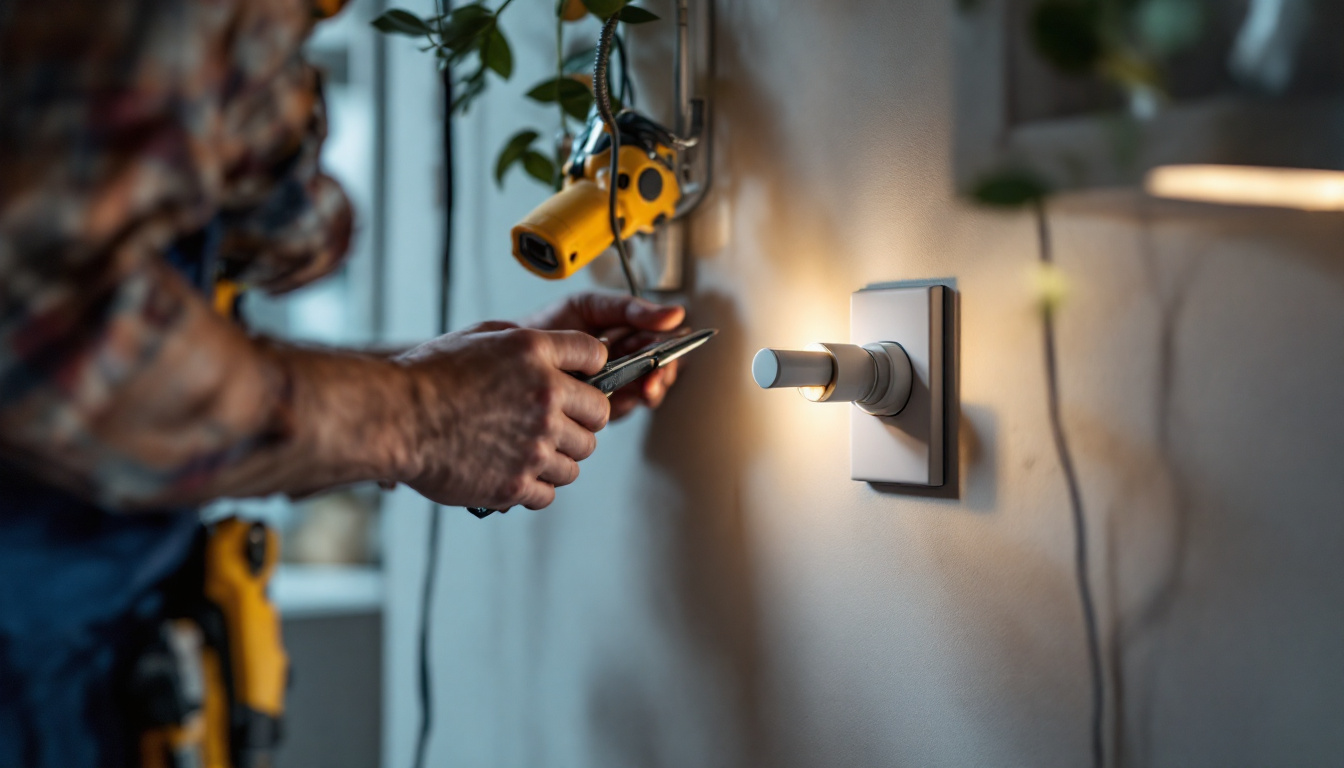
In the world of lighting, the standard incandescent bulb remains a staple choice for many applications. While the technology may seem straightforward, there are numerous pitfalls that lighting contractors can encounter when working with incandescent bulbs and their bases. This guide aims to highlight common mistakes and provide insights to ensure successful installations and customer satisfaction.
Before delving into the common mistakes, it’s essential to understand the types of bases available for incandescent bulbs. The base of a bulb is a critical component, as it connects the bulb to the fixture and ensures proper electrical contact.
Incandescent bulbs primarily come in two types of bases: the medium base (E26) and the candelabra base (E12). The medium base is the most common and is used in a wide variety of household fixtures. On the other hand, the candelabra base is typically found in decorative lighting, such as chandeliers and sconces.
Each base type has its specifications and applications. Understanding these differences is crucial for contractors to ensure compatibility with fixtures and to meet customer expectations. For instance, while the medium base is favored for its versatility, the candelabra base offers a more refined aesthetic, often enhancing the visual appeal of a space. This distinction not only affects the functionality of the lighting but also plays a significant role in the overall design and ambiance of a room.
Using the wrong base type can lead to several issues, including poor electrical connections, flickering lights, or even complete failure of the bulb. Contractors must verify that the bulb base matches the fixture’s socket to avoid these complications.
Additionally, contractors should be aware of the wattage limitations associated with each base type. Exceeding these limits can not only damage the bulb but also pose safety hazards. For example, a medium base socket designed for 60 watts should not be used with a bulb that consumes 100 watts, as this can lead to overheating and potential fire risks. Furthermore, it’s important to consider the type of dimmer switches that may be in use, as not all incandescent bulbs perform well with dimming features, which can further complicate the selection process.
Moreover, the longevity of incandescent bulbs can be influenced by the quality of the base connection. A loose or corroded base can lead to premature bulb failure, which is a common frustration for homeowners. Regular maintenance checks can help identify these issues before they result in more significant problems, ensuring that lighting remains reliable and efficient. Understanding these nuances not only enhances the contractor’s expertise but also builds trust with clients who rely on their knowledge for optimal lighting solutions.
Even seasoned contractors can make mistakes when working with incandescent bulb bases. Here are some of the most common errors and how to avoid them.
One of the most critical aspects of working with incandescent bulbs is adhering to the wattage ratings specified by the fixture manufacturer. Exceeding these ratings can lead to overheating and potential fire hazards.
Contractors should always check the fixture’s wattage rating before selecting a bulb. If a customer requests a higher wattage bulb for increased brightness, it’s essential to explain the risks involved and suggest alternatives, such as using multiple lower-wattage bulbs instead. Additionally, it can be beneficial to educate clients about the advantages of LED bulbs, which offer similar brightness levels at a fraction of the wattage, thus enhancing energy efficiency while reducing the risk of overheating.
Before installing a new bulb, it’s crucial to inspect the socket for any signs of damage, corrosion, or wear. A damaged socket can lead to poor electrical contact, causing flickering or failure of the bulb.
Contractors should take the time to clean the socket and ensure it is in good working condition. If any issues are found, replacing the socket may be necessary to ensure a safe and reliable installation. Furthermore, it’s advisable to educate clients on the importance of regular maintenance checks for their lighting fixtures. This can include periodic inspections and cleaning, which can prolong the lifespan of both the sockets and the bulbs, ultimately saving them money in the long run.
Many lighting fixtures are equipped with dimmer switches to allow for adjustable brightness. However, not all incandescent bulbs are compatible with dimmers, especially when it comes to energy-efficient options.
Contractors must verify that the bulbs being installed are rated for dimming. Using non-dimmable bulbs in a dimming fixture can lead to flickering, buzzing sounds, and reduced bulb lifespan. It’s also worth noting that the type of dimmer switch can affect performance; older dimmers may not work well with modern bulbs, leading to compatibility issues. To avoid these pitfalls, contractors should recommend upgrading to newer dimmer technology that is designed to work seamlessly with a variety of bulb types, ensuring both safety and optimal performance in the lighting system.
Proper installation techniques can significantly impact the performance and longevity of incandescent bulbs. Here are some best practices for contractors to follow.
Ensuring that the bulb is securely connected to the socket is vital. Loose connections can lead to arcing, which not only affects performance but can also pose safety risks.
When installing a bulb, contractors should twist it gently but firmly into the socket until it is snug. Avoid overtightening, as this can cause damage to both the bulb and the socket. It is also advisable to inspect the socket for any signs of wear or damage before installation, as a compromised socket can lead to further issues down the line. Regular maintenance checks can help identify potential problems early, ensuring a safer and more efficient lighting solution.
Having the appropriate tools on hand can make the installation process smoother. While most incandescent bulbs can be installed by hand, having a bulb-changing tool can be beneficial for hard-to-reach fixtures.
Additionally, using a voltage tester can help ensure that the fixture is powered off before installation, reducing the risk of electrical shock. Other useful tools include a ladder for high ceilings and a soft cloth to handle the bulb, preventing fingerprints that can cause hot spots and reduce the lifespan of the bulb. Keeping a well-organized toolkit not only improves efficiency but also demonstrates professionalism to clients, reinforcing the importance of quality workmanship.
Contractors should take the time to educate clients about the bulbs being installed. This includes discussing wattage, expected lifespan, and any specific care instructions.
Providing clients with information on how to change bulbs safely and when to seek professional help can enhance customer satisfaction and build trust in the contractor’s expertise. Additionally, discussing energy efficiency and the benefits of using incandescent bulbs in certain applications can help clients make informed decisions about their lighting choices. Offering a brief overview of alternative lighting options, such as LED or CFL, can also lead to more comprehensive discussions about energy consumption and cost savings, further establishing the contractor as a knowledgeable resource in the field.
Regular maintenance is essential for ensuring the longevity of incandescent bulbs and their fixtures. Here are some maintenance tips that contractors can share with their clients.
Encouraging clients to perform regular inspections of their lighting fixtures can help catch potential issues early. This includes checking for signs of wear, such as frayed wires or discoloration around the socket.
Contractors can suggest a maintenance schedule, perhaps every six months, to ensure that fixtures remain in good working order. This proactive approach can prevent costly repairs down the line.
Dust and debris can accumulate on light fixtures over time, affecting the quality of light and the efficiency of the bulbs. Contractors should recommend that clients clean their fixtures regularly using a soft cloth and mild cleaning solution.
When cleaning, it’s essential to ensure that the fixture is powered off and cool to the touch. This precaution helps prevent accidents and ensures that the cleaning process is safe.
Encouraging clients to replace burned-out bulbs promptly is crucial for maintaining consistent lighting levels. Leaving a fixture with a burned-out bulb can lead to increased strain on the remaining bulbs, potentially shortening their lifespan.
Contractors can offer to schedule regular check-ups to help clients stay on top of bulb replacements, ensuring that their lighting remains effective and aesthetically pleasing.
Understanding the intricacies of standard incandescent bulb bases is essential for lighting contractors aiming to provide top-notch service. By avoiding common mistakes, adhering to best practices, and educating clients, contractors can enhance their reputation and ensure successful installations.
As the lighting industry evolves, staying informed about the latest technologies and practices will be crucial. By focusing on quality installations and maintenance, contractors can set themselves apart in a competitive market and foster lasting relationships with their clients.
In conclusion, the standard incandescent bulb base may seem simple, but it carries significant implications for performance and safety. By following the guidelines outlined in this article, lighting contractors can avoid common pitfalls and deliver exceptional service to their clients.
Ready to elevate your lighting installations with the highest quality incandescent bulb bases and more? Look no further than LumenWholesale, where we provide lighting contractors with spec-grade products at unbeatable wholesale prices. Say goodbye to local distributor markups and hello to a vast selection of reliable, high-performance lighting essentials. With free shipping on bulk orders, you can stock up on everything you need without worrying about hidden fees. Make your next project shine by choosing Wholesale Lighting at the Best Value with LumenWholesale – where quality meets affordability and convenience.

Discover the ultimate guide to light bulb bases with insights from expert lighting contractors.

Discover the ultimate guide to track lighting types with our comprehensive article.

Discover the indispensable role of troffers in modern lighting solutions for contractors.

Discover why staying updated on receptacle electrical standards is crucial for lighting contractors.